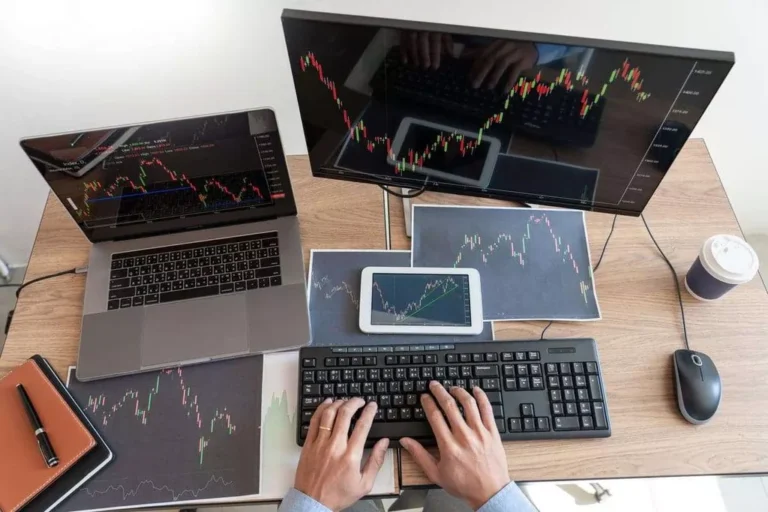Content
Securities and Exchange Commission in January and May 2024, respectively. The relatively new cryptocurrency market suggests that their liquidity may not be deep enough to allow traders to move quickly into and out of positions as is possible with other ETFs. Often, the ETF will realize capital gains during the liquidation process, which it will pay out to the shareholders of record and etf liquidity providers that could mean an unnecessary tax burden.
Discover the possibilities of an active technology ETF
- An ETF is made up of several diversified “building blocks” such as stocks, bonds or commodities.
- Until 2008, the SEC only approved exemptive relief orders for ETFs that tracked specified indexes.
- Since underlying assets are often sold to raise the cash necessary to pay redeeming mutual fund holders there is a taxable event for all holders of the fund.
- While an ETF is closely aligned with the performance of the index it is tracking, they do not match exactly.
- The choice of the index or sector tracked by an ETF can significantly affect its liquidity.
- An ETF’s liquidity is crucial because it impacts trading costs and helps determine how closely the ETF’s price tracks its underlying assets.
For passive managers, finding an index partner who can create an index representing a differentiated strategy in a saturated https://www.xcritical.com/ market should be key. Our subject matter experts bring experience and innovation to help construct a new methodology approach to align with client’s investment strategy. ICE also offers a deep expertise in developing thematic, ESG & climate and other forms of custom indices. In a competitive market, we believe asset managers should have a clear understanding of the strengths of their firm. Are you comfortable disclosing your portfolio holdings daily or do you desire flexible disclosure? Is your strategy driven by client demand, or a new idea that needs to be tested?
Best Forex Liquidity Providers 2024

Contact Fidelity for a prospectus, an offering circular, or, if available, a summary prospectus containing this information. Many investors think that if an ETF doesn’t trade actively Stablecoin the fund is illiquid and should be avoided. The gap between its bid and ask price can be wide if a stock does not frequently trade. But with ETFs, you have two levels of liquidity – that of the ETF and that of the underlying stocks. Both are facilitated by the involvement of an intermediary called a market maker.
International small-caps: Unlocking the value in this unloved asset class
ETFs rely on arbitrage activities to keep the fund’s market price in line with its NAV. And so, when designing an index for an ETF to track, the product development team ensures the ETF basket is liquid enough to efficiently manage the fund from a liquidity perspective. This, in turn, allows market participants to effectively create/redeem ETF shares and keep prices in line with NAV. These transactions may impact the liquidity of underlying security markets. For less liquid securities, such as emerging market equities, market makers may not be able to source the securities. In this case, the ETF issuer might accept cash-in-lieu as part of the ETF basket, purchase those securities directly from underlying security markets for the fund, and then charge related costs to the market maker.

Investors may buy or sell ETF shares through a broker or in a brokerage account, just as they would the shares of any publicly traded company. In return, the AP receives a fixed amount of ETF shares, called a “creation unit.” Some or all of these shares may then be sold on a stock exchange. An AP may redeem ETF shares in creation unit increments in exchange for a “redemption basket” of securities, cash, or both.
Trading volumes and bid-ask spreads need to be considered as the primary liquidity factor. Short sellers provide liquidity, as they tend to be selling into demand when share prices appreciate, and conversely looking to buy back shares when prices decline. For example, if most investors are optimistic about the asset’s future performance, ETF share prices increase, leading to more demand of ETF shares. Short sellers who hold a contrarian view will borrow shares from brokers and sell them when there is more demand for purchases and then buy them back later, when most investors are selling. ETFs trade on a stock exchange so liquidity is available while the market is open, and sometimes pre-market open.
ETF liquidity providers create and redeem shares through a process known as creation unit creation and redemption. This process involves the exchange of a basket of securities for a block of ETF shares, known as a creation unit. The creation unit is then divided into individual shares and sold on the exchange.
If any recipient of this documentation receives this document in El Salvador, such recipient acknowledges that the same has been delivered upon his request and instructions, and on a private placement basis. Since units of an ETF are listed in the inventory trade only, they are not bought and offered like all regular open-ended equity fund. An investor can purchase as many items as he/she needs without any restriction via the trade.
At times, baskets may be limited to a subset of the ETF’s portfolio and contain a cash component. For example, the composition of baskets for bond ETFs may vary from day to day with the mix of cash and the selection of bonds in the baskets based on liquidity in the underlying bond market. Typically, the composition of an ETF’s daily creation and redemption baskets mirror one another. They do this by buying or selling the underlying assets of the ETF in large blocks, known as creation units. This process helps to keep the price of the ETF in line with the value of its underlying assets. APs are typically large financial institutions that have the resources and expertise to execute trades quickly and efficiently.
Etfs are traded on stock exchanges, and their liquidity is determined by the number of shares traded daily and the bid-ask spread. High liquidity means that investors can easily buy or sell shares of an ETF without affecting its price significantly. This feature makes ETFs an attractive investment option for both retail and institutional investors. It helps to keep prices in line with the value of underlying assets, which reduces the risk of price distortions. Liquidity providers play a critical role in this process, acting as market makers and ensuring that the market remains liquid and efficient. While ETF arbitrage comes with risks, the benefits it provides to investors make it an essential part of the ETF ecosystem.
ETFs, which are passively managed, tend to have significantly lower expense ratios than actively managed mutual funds. Costs such as a management fee, fund accounting and trading expenses, and load fees related to their sale and distribution. Liquidity providers and market makers play a pivotal role in shaping market structures.
Index-based ETFs are designed to track the performance of specified market indexes. In some cases, an ETF may track a multiple of its index, an inverse of its index, or even a multiple inverse of its index. Instead, an actively managed ETF’s investment adviser, like that of an actively managed mutual fund, creates a unique mix of investments to meet a particular investment objective and policy.
Yes, traders can purchase partial shares of an ETF on the inventory trade. This allows for greater flexibility in investing small quantities of cash. Inverse ETFs use varied financial instruments, similar to derivatives and futures contracts, to create a brief position within the underlying index or assets.
Liquidity providers are financial institutions that are responsible for making markets in ETFs. They provide liquidity by buying and selling ETFs to investors, which helps to ensure that there is always a buyer or seller available. Liquidity providers are typically large banks or trading firms that have the resources and expertise to make markets in a wide range of ETFs. Also, a high degree of liquidity helps to keep the market stable and reduces the possibility of price manipulation.
